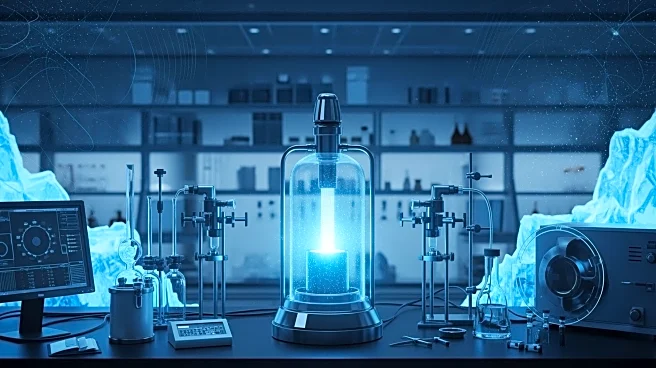What's Happening?
Researchers at Penn State have developed a new method to identify superconductors, which are materials capable of conducting electricity without resistance. This breakthrough could lead to the discovery
of materials that function as superconductors at higher temperatures, potentially even at room temperature. The research, supported by the Department of Energy, aims to overcome the limitations of current superconductors, which only operate at extremely low temperatures. The team, led by Professor Zi-Kui Liu, has utilized a theory-driven approach that combines density functional theory (DFT) with zentropy theory to predict superconducting materials. This method could transform energy transmission and usage by enabling the development of long-lasting power sources.
Why It's Important?
The discovery of room-temperature superconductors could revolutionize the energy sector by significantly reducing energy loss during transmission. Superconductors allow for resistance-free electron flow, which means electricity can be transmitted more efficiently and over longer distances. This advancement could lead to more sustainable and cost-effective energy systems, impacting industries reliant on electricity. Additionally, the ability to predict and identify new superconducting materials could accelerate technological advancements in electronics and quantum computing, offering substantial economic and societal benefits.
What's Next?
The research team plans to apply their method to predict the transition temperatures of existing high-temperature superconductors and to search for new materials with higher transition temperatures. They aim to collaborate with experimental scientists to test the most promising candidates from their database of five million materials. If successful, this approach could lead to the discovery of practical high-temperature superconductors, potentially transforming modern technology and energy systems.












